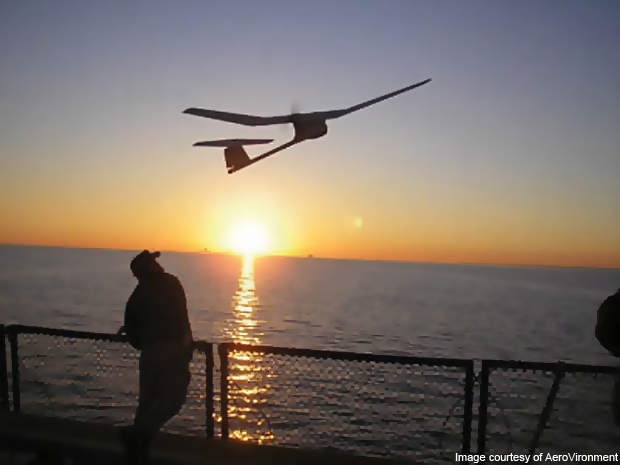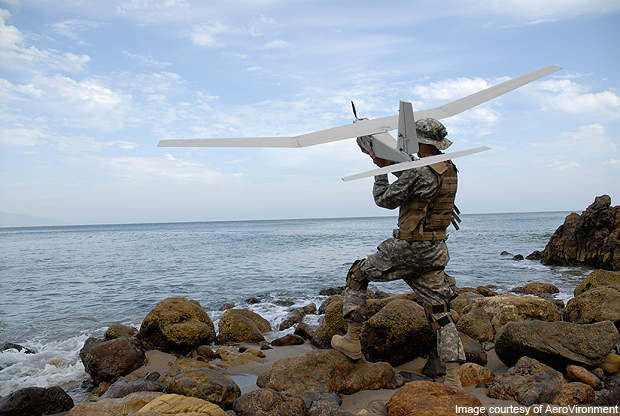The Avinc Puma AE (all environment) is a compact, robust and lightweight remote-controlled unmanned aerial system (UAS) designed and manufactured by AeroVironment (AV) to meet the requirements of US Special Operations Command (USSOCOM).
The Puma executes intelligence, surveillance, target acquisition and reconnaissance missions. It captures high-resolution imagery or critical videos of the battlefield and transmits them to a ground control station (GCS) through a line of sight datalink. It is a third-generation man-portable and hand-launched vehicle and can land automatically on land or water.
Flying at a maximum altitude of 500ft, the UAV offers high-resolution colour, infrared imagery or videos to the GCS and remote viewing units.
The vehicle can perform a wide range of operations including battle damage assessment, maritime intervention operations, visit board search seizure, search and rescue, port and coastal patrolling and drug interdiction.
Puma UAV variant programme
The development of the Puma has been undertaken as part of the all environment capable variant (AECV) programme. It marked the fourth open competition conducted by the US Department of Defense for small UAS programme records. Puma AE was chosen as the AECV solution by the USSOCOM in July 2008. Each Puma comprises three unmanned aerial vehicles and two GCCs.
In June 2007, the Puma AE accomplished an endurance of five hours. It also achieved seven hours of endurance in November 2007. The original Puma was powered by an on-board fuel cell battery hybrid energy storage system and accomplished a flight endurance of nine hours in March 2008. This flight demonstration was carried out under the AV’s small business innovation research phase II contract with the Air Force Research Laboratory.
Puma AE orders and deliveries
The US Department of Defense awarded a $35.3m contract to AeroVironment in August 2010 to provide digital Puma unmanned aircraft systems (UAS), spares and training services under the USSOCOM AECV indefinite-delivery, indefinite-quantity (ID/IQ) programme.
Another order, worth $4.3m, was awarded to AeroVironment in September 2010 to supply payloads and retrofits for the vehicle.
In October 2010, AeroVironment was awarded a $7.2m contract to supply digital Puma AE UAS and training services.
The US Army awarded a $17.2m contract to AeroVironment in November 2010 to offer contractor logistics support, training and accounting in support of the joint urgent operational need statement for route clearance.
AeroVironment was awarded a $11.5m contract from the US Department of Defence in April 2011 to provide a new digital Puma AE UAS, initial spares and training services under the USSOCOM AECV ID/IQ programme.
In August 2011, the USSOCOM awarded a $65.5m contract to Aerovironment to supply a new digital Puma AE and initial spare packages under the AECV ID/ ‘IQ programme.
Puma unmanned aerial vehicle design
The Puma has been designed to execute military and civilian operations in the day and night. The UAV’s robust airframe design allows it to operate in adverse weather conditions. The vehicle is fitted with a two-blade propeller at the front section of nose. It also incorporates ProCore fuel cell system certified by Protonex Technology. The hydrogen generation technology deployed in the vehicle is supplied by Millennium Cell.
Navigation
Avinc’s Puma can be controlled either manually from the ground control station or in an autonomous mode. It can take off and land automatically using a programmed global positioning system or an inertial navigation system.
Sensors
The UAV is fitted with high-resolution electro-optic and infra-red sensors. These waterproof sensor packages provide image tracking, image stabilisation and high-image quality.
Ground control station
The GCS is designed and manufactured by AeroVironment. It displays real-time videos or imagery captured by the UAV’s payload cameras. The processing, retrieving, storing and monitoring of the metadata offered by the Puma AE are carried out at the GCS.
Communication between the GCS and the Puma takes place through a global positioning system within a range of 15km. The GCS also acts as a remote video terminal when installed at remote locations.
It also helps ground station operators to capture screen shots, store and playback data or videos for target evaluation, and allows the retransmission of real-time data or videos to operation networks. The GCS can be assembled or disassembled in few minutes.
Performance
The Puma can fly at a maximum speed of 83km/h and has a range of 15km. It can stay in the air for a maximum of two hours using a rechargeable battery. Its maximum altitude is 152m. The aircraft weighs around 5.9kg.
The Global Unmanned Aerial Vehicles (UAV) Market 2011-2021
This project forms part of our recent analysis and forecasts of the global unmanned aerial vehicles (UAV) market available from our business information platform Strategic Defence Intelligence. For more information click here or contact us: EMEA: +44 20 7936 6783; Americas: +1 415 439 4914; Asia Pacific: +61 2 9947 9709 or via email.











